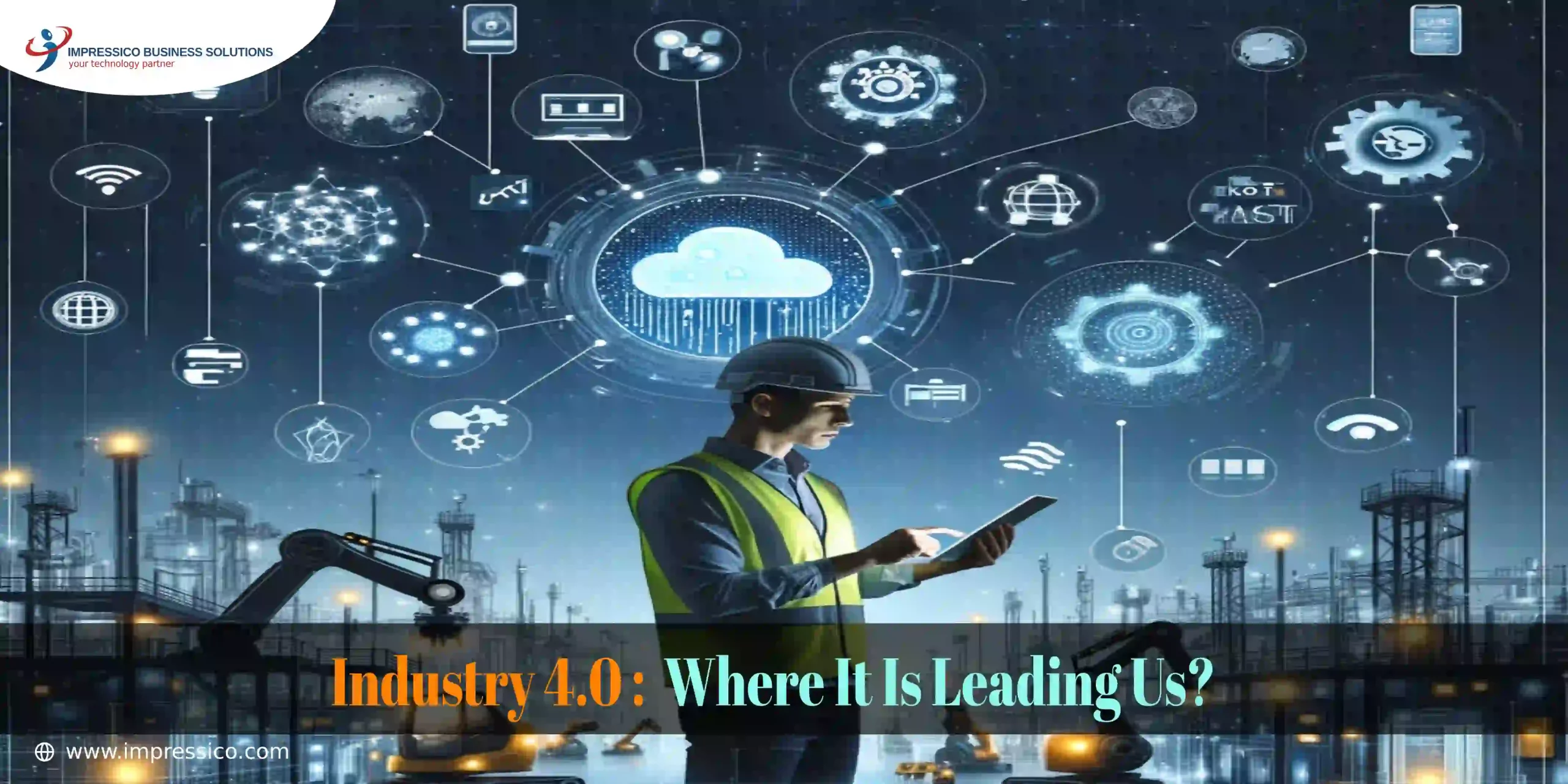Industry 4.0 and Where It Is Leading Us?

The digitization of manufacturing has drastically transformed the way modern production is being carried out. In fact, this transformation has been so radical that it is being labelled as Industry 4.0 to demonstrate the fourth revolution that has occurred in manufacturing. Let’s get a back little in history to revisit the first industrial revolution that led to widespread mechanization through water and steam power. The second industrial revolution was all about mass production and assembly lines using electricity. The fourth industrial revolution is going to carry forward the legacy started by the third revolution that encompassed the adoption of computers and automation and added its own touch with the addition of smart and autonomous systems powered by data and machine learning.
What is Industry 4.0?
Industry 4.0, also often referred to as IoT or smart manufacturing, generally refers to the fourth phase of the Industrial Revolution that relies heavily on interconnectivity, automation, machine learning, and real-time data. Industry 4.0, in other words, juxtapose physical production and operations with smart digital technology, machine learning, and big data to create a seamless production system and a more holistic supply chain management for companies.
This interconnectivity and automation help organizations improve their overall manufacturing process through better connectedness and access to real-time insights and data across departments, vendors, processes, partners, products, and people. Industry 4.0 empowers business owners by allowing them to remain in control of every aspect of their operations. It leads to a solid boost in productivity and improves processes through a more inclusive, intertwined, and all-inclusive approach to manufacturing.
Industry 4.0 augments the computerization of Industry 3.0
Computers were introduced first in Industry 3.0, which back then was an entirely new technology. Now, as Industry 4.0 takes digital technology to an entirely different level with the help of better interconnectivity through the Internet of Things (IoT) and access to real-time data, interconnected computers possess the ability to communicate without any human involvement efficiently.
The introduction of cyber-physical systems, IoT, and the Internet of Systems offer access to real-time data, making Industry 4.0 a distinct possibility and the smart factory a reality. Modern factories are becoming more efficient, productive, and utilizing resources more efficiently thanks to the support they receive from intelligent machines that keep getting more competent as they get access to instant data and meaningful insights. Ultimately, it’s the network of these digitally connected machines that seamlessly communicate information that unleashes the real potential and the true power of Industry 4.0.
Growth prospects of Industry 4.0
A recent Markets and Markets report reveals that the global Internet of Things (IoT) in the manufacturing sector is currently worth $10.45 billion and is set to reach $45.3 billion a few years down the line.
According to the report, that compound annual growth rate (CAGR) of 29% will be dominated by North America, regions heavily invested in research and development activities.
“Due to the early adoption of trending technologies, such as IoT, big data, DevOps and Mobility, manufacturers in North America are keen to integrate IoT technologies in their processes,” the report said. “Growing number of SMEs and increasing digitization in manufacturing by large organizations, such as IBM and General Electric, have also aided the growth of the North American IoT Solutions Companies in the manufacturing market. SMEs are flexible in incorporating new technologies into their existing systems, whereas large manufacturers have heavy budgets for digitization.”
What organizations need to adopt Industry 4.0?
- Organizations operating in a highly competitive industry with a lot of tech-savvy players
- Organizations that need to improve their supply chain
- Organizations are keen on nipping issues in the bud before they snowball into something significant.
- Organizations wanting to boost efficiency and profitability across the entire organization
- Organizations in need of richer and timelier analytics for up-to-date, relevant views of production and business processes
- Organizations are interested in digitizing more and more processes to generate customer satisfaction and loyalty.
Conclusion
Industry 4.0 is rapidly evolving, which means organizations need to be constantly on their toes to realize Industry 4.0’s true potential. Businesses must continuously invest in technology and solutions to improve and optimize their operation to stay competitive and provide the same or better level of service than their competitors.
Organizations Need: FAQs on Industry 4.0
How does Industry 4.0 differ from previous industrial revolutions?
Industry 4.0 builds on the digital revolution, emphasizing interconnectivity, automation, machine learning, and real-time data, whereas previous revolutions focused on mechanization, mass production, and automation through electronics and IT.
What are the key components of Industry 4.0?
Cyber-physical systems, IoT, the Internet of Systems, and real-time data analytics are core components.
What potential does Industry 4.0 hold for manufacturing?
It promises enhanced efficiency, productivity, and self-monitoring production that can lead to smarter, more sustainable practices.
What is needed for an organization to adopt Industry 4.0?
Companies must be adaptable, willing to improve supply chains, eager to address issues proactively, and ready to embrace digital transformation for greater efficiency and customer satisfaction.
